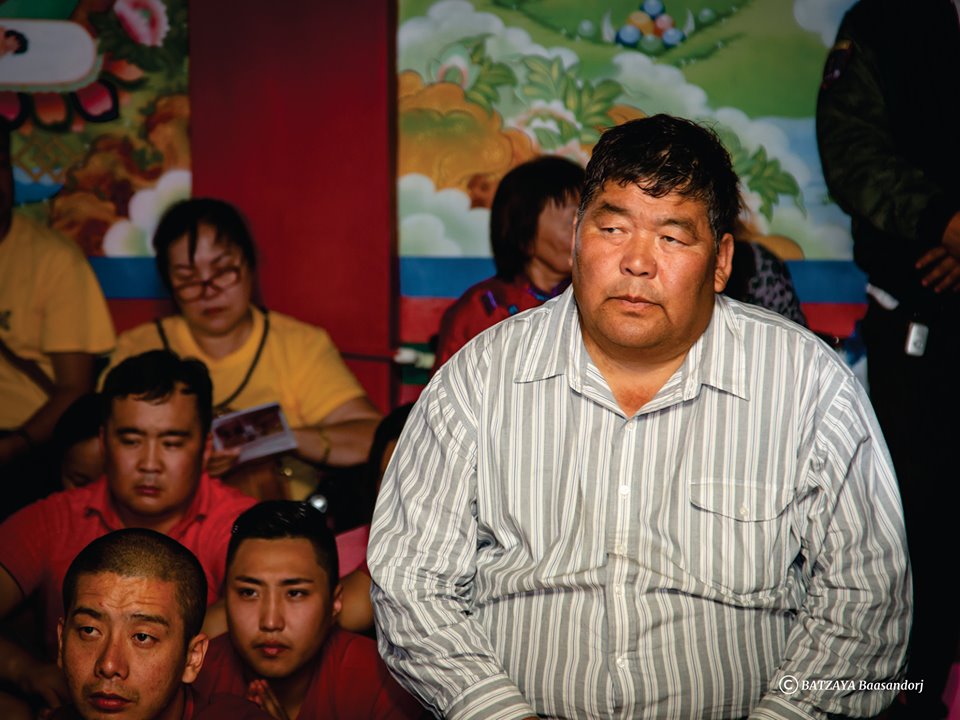Appreciation of Z.Altangerel
Z.Altangerel (1960-2019)
Z.Altangerel, the seventh-generation tahilch, or curator, of the memory of the fifth Noyon Khutagt of the Gobi, Danzanravjaa (1803-1856), has left this world and passed away into Shambhala. Altangerel, whose role was to protect and safeguard the material, spiritual and intellectual legacy of Danzanravjaa for future generations, set an example to his successor by his deep faith that what remained from the great work of a single life on this earth would welcome to the paradise of Shambhala where the wisdom of the holy ones resides.

Altangerel absorbed the secrets of spiritual culture under the wise and austere tutelage of his grandfather, the previous tahilch Tüdev, and was someone who inherited through succession the wisdom which had been buried in boxes beneath the earth during the late 1930s, when Buddhism was suppressed in Mongolia. In truth, it was the fame and wisdom of this holy man from Dornogov which made the combined effort of Altangerel, who had the responsibility of reviving Danzanravjaa’s legacy, and the politician and writer L.Odonchimed so successful. The flourishing of popular understanding about Danzanravjaa in 1990, the year in which Mongolia realized its democratic society, and the revival of the pure wisdom of Hamarin Hiid and Shambhala, was a wonderful development for Buddhist culture in the world. Today, Hamarin Hiid and Shambhala are a renowned worldwide brand, not only associated with Mongolia, but also with the Gobi.
In fulfilling his vow as the tahilch, Altangerel preserved and promoted this great legacy as a single individual, a fine example of what humanity has the ability to achieve. How great an influence, we might ask, can a single individual have in history? Over thirty years, he was able to help the Mongolian people in completing what the government could not. His life was ordinary, but what he accomplished was utterly unordinary.
Our Mongolian people had created its own technology for protecting nomadic culture and a form of protection for the safeguarding, reviving, and passing on this part of the nation’s cultural heritage, and during his lifetime, Altangerel helped in the understanding and knowledge of what the people had inherited.
When I was occupied with writing my novel about Danzanravjaa, The Holy One, I mixed together my ability to make friends with good people and place my trust in them with what I had taken from the philosophical complexity and hidden aspects of Danzanravjaa’s life and work. As I did so, Altangerel prayed that my novel would be successful and that it would be pleasing to Heaven. I listened to him and read what he gave to me, and he spoke with direct honesty about his childhood (and about his grandfather Tüdev), when he had learnt how to be a tahilch, and about the onerous work of being a tahilch.
Unfortunately, in recent years, drilling and mining developed quickly in the area around Hamarin Hiid and Shambhala, and this greatly troubled Altangerel, making his already bad health worse. This pure handful of earth, this pure shard of rock, this key intersection of the power of the earth, the power of wisdom, and the power of the universe, which has absorbed for many generations the blessings of holy people, is an unassailable precious jewel. This great man, Altangerel, dedicated his whole life for this place, and has preserved its great heritage for us. The great mental strength and vigor which he poured into this work likewise remains, and reminds us that the life of the mind, and of wisdom, is of far greater importance than our material and personal desires.
Now he remains through his history, his memory, and his legacy. Hamarin Hiid and Shambhala remain as the world’s inheritance.
And to us all he has left the great power, which resides in the human heart, for cultural education, for safeguarding culture, and for the act of creating.
May I not pass into Shambhala, but may the conditions be right so that I might be reborn in Mongolia!
Om mani padme hum

